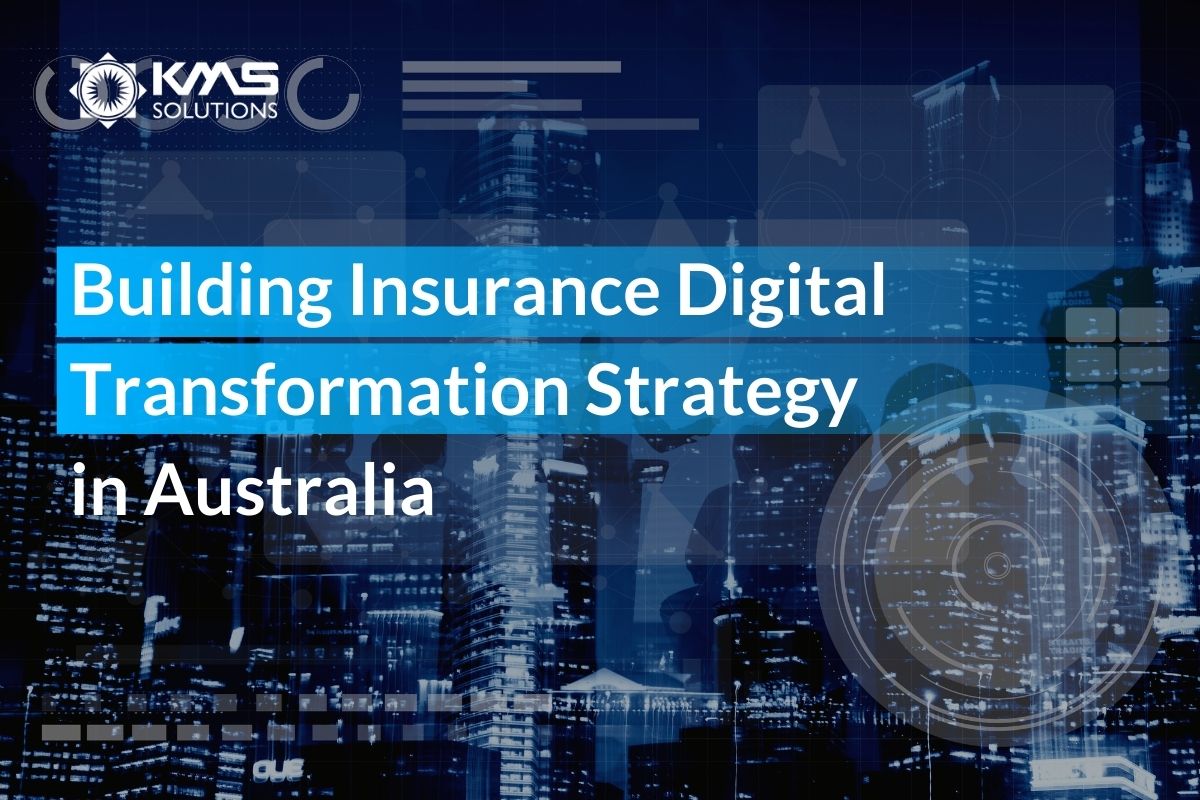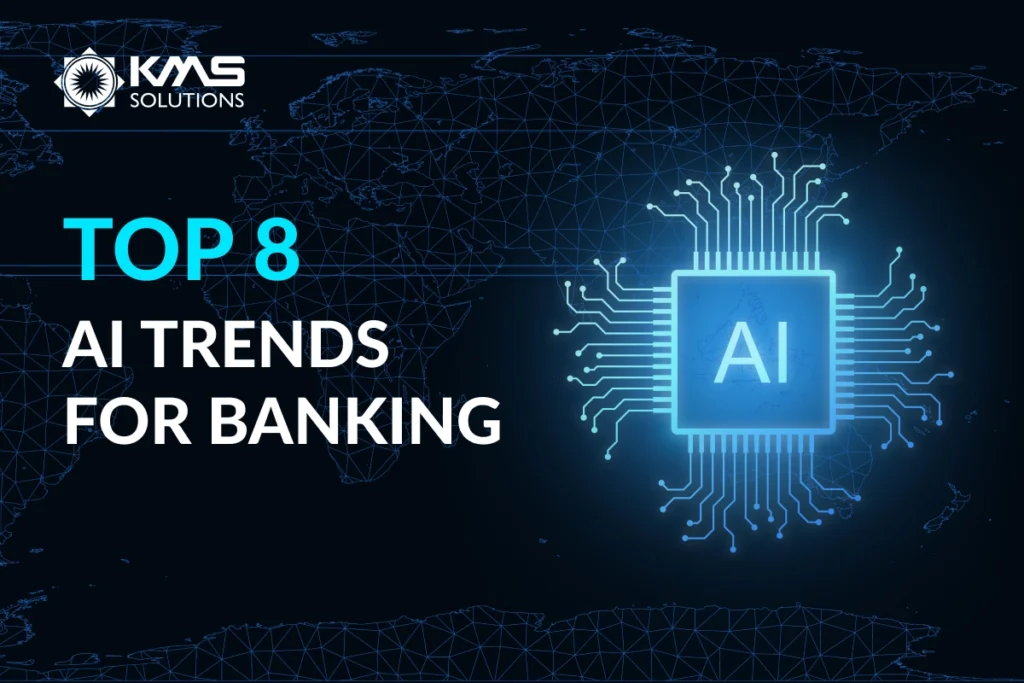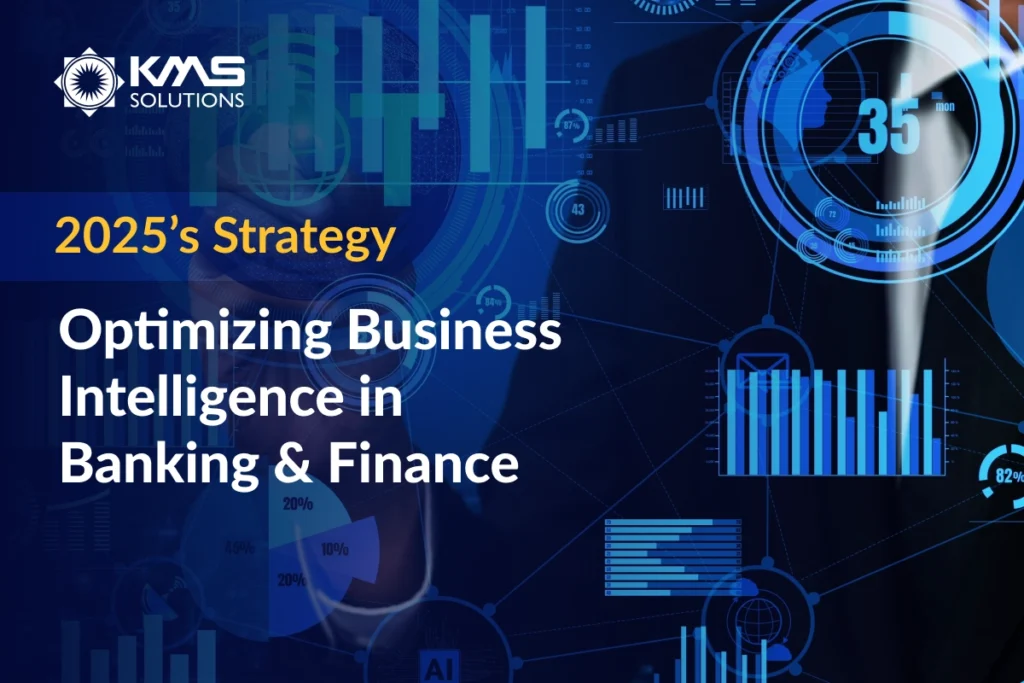Digital transformation in Australia’s insurance sector has evolved from a competitive advantage to a business imperative. As technology reshapes the industry and customer expectations shift, insurers must adapt quickly to stay competitive. This guide provides practical strategies for Australian insurers to successfully navigate their digital transformation journey while enhancing customer experience and operational efficiency.
What is Insurance Digital Transformation?
Digital transformation in insurance isn’t just about adopting new technologies – it’s about fundamentally rethinking how insurers serve their customers in the digital age. For Australian insurers, this transformation represents a shift from traditional, paper-based operations to data-driven, customer-centric business models. Regulatory requirements and evolving customer expectations are driving this change, making it more than just a competitive advantage—it’s becoming a necessity for survival.
The key differentiator in successful transformation lies in understanding that technology is just an enabler. The real value comes from how these tools improve customer experience, streamline operations, and create new business opportunities. We’re seeing Australian insurers increasingly focus on what we call the “transformation trinity”: people, processes, and technology.
How do Australian Insurance Firms Benefit from Digital Transformation?
Australian insurance companies are revolutionizing their services through digital transformation, addressing unique regional challenges across the continent. Insurance Australia Group (IAG) and Suncorp lead this digital evolution by implementing drone technology for efficient natural disaster assessments – a crucial innovation for Australia’s frequent bushfires, floods, and cyclones.
With 89% of Australians using smartphones, major insurers like QBE have developed mobile-first applications enabling instant policy management and claims submission, particularly benefiting customers in remote areas. Under APRA’s (Australian Prudential Regulation Authority) guidelines, insurers have created advanced fraud detection systems that align with the Privacy Act 1988 and Insurance Contracts Act 1984. Notable innovations include Allianz Australia’s weather-specific predictive analytics, which precisely assess risks across diverse regions from tropical Queensland to central Australia.
These digital advancements have also prioritized cultural inclusivity, with tailored platforms ensuring accessibility for Aboriginal and Torres Strait Islander communities, demonstrating how Australian insurers uniquely combine technological innovation with cultural sensitivity in their digital transformation journey.
Digital Transformation Strategy Framework for Insurance Companies
Insurance companies must adopt a comprehensive digital transformation framework to thrive in today’s dynamic market. A successful framework begins with customer-centric digital initiatives, supported by robust data analytics and infrastructure modernization.
At its core, insurers should prioritize three key pillars: operational excellence through process automation (including RPA for data entry and streamlined claims processing), enhanced customer experience through omnichannel engagement (evidenced by Accenture’s 2017 finding that 43% of customers would switch providers due to poor service accessibility), and innovation-driven growth leveraging emerging technologies like AI and IoT.
The framework must also incorporate strong data security measures and regulatory compliance protocols, addressing one of the industry’s primary digital transformation challenges. Forward-thinking insurers like John Hancock demonstrate the framework’s effectiveness through their myJH platform, which integrates policy management, claims submission, and AI-powered chatbots into a unified customer interface.
For sustainable implementation, companies should establish clear governance structures, invest in talent development, and create agile teams capable of rapid adaptation to technological changes while maintaining robust risk management practices.

Customer-Centric Insurance Solutions Through Digital Innovation
Let’s talk about what your customers really want. Recent market research shows that 76% of Australian insurance customers expect seamless digital experiences comparable to what they get from other service providers. This isn’t about digitizing existing processes – it’s about reimagining the entire customer journey through a digital lens.
The most effective approach is to map your customer journey with what we call “moment-of-truth mapping.” This involves identifying critical interactions where digital solutions can significantly improve the customer experience. For instance, claims processing – traditionally a pain point – can become a moment of delight through automated, transparent processes.
Insurance Digital Transformation Technologies and Implementation
The technology landscape for insurance transformation isn’t about chasing every new innovation. Instead, we’re seeing successful Australian insurers focus on what matters most: technologies that solve real business problems. AI and machine learning, for instance, are proving invaluable in underwriting and claims processing. They’re not just automating tasks – they’re helping make better decisions through what we call “augmented intelligence.”
Blockchain and smart contracts are transforming trust-based processes in insurance. When we talk about blockchain in insurance, we’re not just talking about cryptocurrency. We’re talking about creating transparent, automated processes for claims verification and policy management. Australian insurers using this technology are seeing significant reductions in processing times and operational costs.
Regulatory Compliance and Security in Digital Insurance
In the Australian context, regulatory compliance isn’t a roadblock to innovation – it’s a framework for responsible transformation. APRA’s requirements, particularly CPS 234, set clear guidelines for managing technology risks. The key is integrating these requirements into your transformation strategy from the start, rather than treating them as an afterthought.
Consumer Data Rights (CDR) implementation is reshaping how insurers handle customer data. This isn’t just about compliance – it’s about building trust through transparency and data security. Australian insurers who get this right are seeing improved customer confidence and engagement.

Change Management and Cultural Transformation
Here’s a truth often overlooked: digital transformation is 70% about people and 30% about technology. The most sophisticated technology won’t deliver results if your team isn’t on board. Successful transformation requires what we call “digital DNA” – embedding digital thinking into every aspect of your organization.
Leadership plays a crucial role here. We’re seeing successful transformations where leaders actively champion change, demonstrate digital adoption, and create an environment where innovation is encouraged and failure is seen as learning.
Measuring Digital Transformation Success
Let’s talk about metrics that matter. While digital adoption rates are important, the real measure of success lies in business outcomes. Are you seeing improved customer satisfaction scores? Has your claims processing time decreased? Are your operating costs reducing? These tangible metrics tell the real story of transformation success.
Australian insurers leading in digital transformation are using what we call “balanced scorecard approach” – measuring success across customer satisfaction, operational efficiency, employee engagement, and financial performance.
The Future of Insurance in Australia: Digital Transformation Trends You Can’t Ignore
Let me tell you something exciting – the insurance industry is going through a remarkable transformation, and it’s happening right here in Australia. Gone are the days of tedious paperwork and week-long waiting periods. The future is digital, and it’s revolutionizing how we think about insurance. Let’s dive into the key trends that are reshaping our industry.
Embedded Insurance: The Future of Distribution
Think about this – when was the last time you specifically went looking for insurance? Probably not recently, right? That’s because embedded insurance is changing the game. Instead of hunting for insurance, it now finds you at exactly the right moment.
Here’s what’s happening: Australian insurers are cleverly integrating their products into your everyday purchase journeys. Booking a flight to Bali? Travel insurance pops up right there in your booking app. Just bought the latest iPhone? Device protection is offered seamlessly during checkout. But it goes much deeper than that.
The real power of embedded insurance lies in its contextual relevance. Imagine buying a new home and having your home insurance, contents insurance, and even mortgage protection insurance all offered as part of your home loan process. Or purchasing a new bicycle and being offered theft protection that’s tailored to your specific model and usage patterns.
Australian insurers are partnering with retailers, service providers, and digital platforms to create these seamless insurance moments. They’re using data analytics to understand exactly when and where you might need insurance, and they’re making it incredibly easy to get covered. No more separate applications, no more hunting around for quotes – just simple, relevant insurance protection when you need it.
The results speak for themselves: embedded insurance is seeing conversion rates up to 10 times higher than traditional insurance sales channels. Why? Because it’s timely, relevant, and effortless. When insurance is offered at the right moment, with the right context, and with minimal friction, people are much more likely to protect themselves and their purchases.

AI and Machine Learning: Your 24/7 Insurance Partner
The role of Artificial Intelligence in insurance isn’t just about automation anymore – it’s about creating a completely new kind of insurance experience. Let me show you how AI is transforming every aspect of your insurance journey, making it smarter, faster, and more personalized than ever before.
First, let’s talk about underwriting – traditionally one of the most time-consuming parts of getting insurance. AI-powered systems are now analyzing thousands of data points in real-time to assess risk and calculate premiums. This means you can get a quote that’s truly personalized to you, not just based on broad demographic categories. For example, if you’re a safe driver with a clean record, AI can factor in your actual driving behavior, not just your age and location, to give you a better rate.
But that’s just the beginning. AI chatbots have evolved from simple question-answering tools to sophisticated virtual assistants that can help you with everything from policy changes to claims processing. These systems use Natural Language Processing to understand not just what you’re asking, but the intent behind your questions. They can guide you through complex processes, explain policy details in plain language, and even detect when you might need to speak with a human expert.

Fraud detection is another area where AI is making a huge impact. Traditional rule-based systems could only catch known fraud patterns, but AI can identify suspicious patterns that humans might miss. Machine learning algorithms analyze thousands of claims in real-time, looking for subtle indicators of fraud while ensuring legitimate claims are processed quickly. This means lower premiums for honest customers and faster claim settlements.
Perhaps most exciting is how AI is enabling predictive analytics. Insurers can now anticipate potential issues before they become problems. For example, AI systems can analyze weather patterns and property data to warn homeowners about potential flood risks, or use health data to identify early warning signs of medical conditions. This shift from reactive to proactive insurance isn’t just saving money – it’s potentially saving lives.
Personalization is reaching new levels too. AI algorithms can analyze your insurance history, lifestyle patterns, and risk profile to recommend personalized coverage options. They can even adjust your coverage automatically based on changing circumstances – like temporarily increasing your home insurance coverage when you purchase valuable items.
Open Insurance: Welcome to the Insurance Ecosystem
The concept of Open Insurance represents a fundamental shift in how insurance services are delivered and consumed. Inspired by the success of Open Banking, this trend is about breaking down the traditional silos in insurance and creating a more connected, customer-centric ecosystem.
At its core, Open Insurance is about data sharing and service integration. Through secure APIs (Application Programming Interfaces), insurers can share data and services with trusted partners, creating new possibilities for innovative insurance products and services. For example, imagine your fitness app sharing data with your health insurer to give you personalized wellness recommendations and premium discounts based on your activity levels.
This approach isn’t just convenient – it’s transforming the entire insurance value chain. Banks can offer insurance products directly through their apps, healthcare providers can integrate with insurance systems for seamless claims processing, and customers can manage all their insurance needs through a single platform.

Digital-First Customer Experience: Insurance at Your Fingertips
The days of dealing with endless paperwork and long phone calls are over. Australian insurers are embracing a “digital-first, but not digital-only” philosophy that puts convenience and control in your hands while ensuring expert support is always available when you need it.
Modern insurance apps and portals give you complete control over your insurance journey. You can compare policies, make changes to your coverage, file claims, and track their progress – all from your smartphone. Digital document verification and e-signature capabilities mean you can complete most insurance transactions without touching a piece of paper.
But the real innovation is in how these digital tools integrate with human expertise. When you’re dealing with a complex claim or need advice on coverage options, you can seamlessly transition from digital self-service to video chat with an expert who has full context of your situation.
Parametric Insurance: Simple, Transparent, and Instant
Parametric insurance is revolutionizing how we think about insurance claims. Unlike traditional insurance that requires complex assessment processes, parametric insurance operates on a simple principle: if a predefined condition is met, the payment is automatically triggered.
This approach is particularly powerful for specific types of risks. For example, flight delay insurance that automatically pays out when your flight is delayed by more than two hours, or crop insurance that pays farmers when rainfall falls below certain levels. No paperwork, no assessments, no waiting – just instant, automated payments when you need them.
The beauty of parametric insurance lies in its transparency and efficiency. Both the insurer and the insured know exactly what conditions trigger a payout, and because these conditions can be verified using objective data sources, there’s no room for dispute or delay.

Low-Code/No-Code Development: Faster Innovation
The rise of low-code/no-code development tools is democratizing insurance innovation. These platforms allow insurers to create and modify digital insurance products and services without extensive coding, dramatically reducing the time and cost of innovation.
This means insurers can respond more quickly to market needs, test new products faster, and continuously improve their digital services based on customer feedback. For you, this translates to more innovative insurance products, better digital experiences, and faster access to new features and services.
These trends aren’t just changing how insurance works – they’re fundamentally transforming what insurance means. We’re moving from a model of reactive compensation to one of proactive protection, from standardized products to personalized solutions, and from complex processes to seamless experiences.
Key Roles Required for the Insurance Digitalization Teams
Building a successful digital transformation team in insurance requires a strategic combination of expertise across multiple domains. Here’s a comprehensive overview of the essential roles:
Strategic & Leadership Roles:
- Digital Transformation Consultant: Examines the challenges and requirements of the insurance business, designs a tailored digital transformation strategy and plan, assesses the viability of each initiative, and provides recommendations for risk mitigation measures.
- Project Manager: Develops the roadmap for the insurance innovation project, oversees team coordination, tracks progress, communicates updates to stakeholders, and implements adjustments to enhance collaboration, mitigate risks, and achieve improved digital transformation results for the client.
- Compliance Consultant: Reviews relevant legal requirements, recommends appropriate compliance policies, develops a compliance framework, and contributes to the design and quality assurance of newly implemented or upgraded software.
Technical Architecture & Development:
- Solution Architect: Develops the architecture for the insurance IT ecosystem, software, and integration solutions. Modernizes legacy insurance systems and recommends the ideal technology stack for digital transformation in the insurance sector.
- DevOps Engineer: Develops and configures CI/CD pipelines, establishes and continuously enhances the cloud automation environment, and contributes to the configuration of the IT infrastructure.
- Front-end Developer: Implements the user interface for insurance software and resolves issues identified by the QA team.
- Back-end Developer: Develops the server-side functionality of insurance software, implements necessary integrations, and addresses issues identified by the QA team.
User Experience & Design:
- UX Designer: Conducts UX research for employee- and client-facing insurance applications, creates wireframes, and refines them based on UAT (user acceptance testing) feedback.
- UI Designer: Transforms the final UX wireframes into the insurance app’s UI design mockups, and adjusts the mockups following stakeholder and user feedback

Quality & Support:
- QA Engineer: Prepares and implements a test strategy, a test plan, and test cases to assure the quality of insurance software, reports software defects, and validates fixes.
- Security Engineer: Protects sensitive insurance data and ensures compliance
Each role contributes unique expertise to the digital transformation journey, ensuring comprehensive coverage of all aspects from strategic planning to technical implementation and ongoing support. The key to success lies in effective collaboration and clear communication among team members, guided by strong leadership and a shared vision for insurance modernization.
Sourcing Models for Digital Transformation of Insurance
Insurance companies have three primary approaches to implementing digital transformation initiatives, each with distinct advantages and considerations:
In-House Implementation Model
- Offers complete control over the transformation process and intellectual property
- Enables direct management of security and compliance measures
- Requires significant investment in hiring and training specialized talent
- Challenges include slower scaling capabilities and potential skill gaps
- Best suited for insurers with strong existing IT capabilities and resources
Hybrid (Partial Outsourcing) Model
- Combines internal expertise with external specialist resources
- Provides flexibility to scale teams based on project needs
- Allows retention of core competencies while accessing specialized skills
- Requires robust project management for coordinating distributed teams
- Popular choice for mid-size insurers balancing control and efficiency
Full Outsourcing Model
- Offers access to comprehensive digital transformation expertise
- Transfers project management responsibility to experienced vendors
- Reduces implementation time through ready-to-deploy teams
- Cost-effective approach for accessing specific technical expertise
- Ideal for insurers seeking rapid transformation with minimal internal disruption

Success in any model depends on clear strategic alignment, strong governance frameworks, and effective communication channels. Insurers should evaluate their internal capabilities, resource availability, and transformation objectives when selecting the most appropriate sourcing model.
Conclusion
The digital transformation journey in Australia’s insurance sector is no longer optional—it’s a strategic imperative for survival and growth in an increasingly digital world. Success in this transformation requires a balanced approach that combines technological innovation with human-centered design, all while maintaining regulatory compliance and data security.
As the insurance landscape continues to evolve, organizations must stay agile and responsive to changing customer needs and technological advances. Whether you’re at the beginning of your transformation journey or looking to accelerate existing initiatives, having the right technology partner is crucial for success.
KMS Solutions brings extensive experience in digital transformation for the insurance sector, with a proven track record of helping insurers navigate these challenges successfully. Our team of experts understands the unique requirements of the Australian market and can help you build a robust digital transformation strategy tailored to your specific needs.











